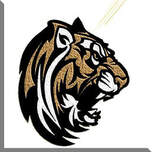
Soccer is a continuous game of opposites. The obvious opposite is when one team attacks, the other has to defend. Detailed below are some of the opposites in a game that players should be made aware of in order to make good decisions and to improve and advance in their ability and skill, in not only playing the game but also reading it.
No matter what we are doing in practice, because of the opposites, both offensive and defensive players should be engaged to learn to how to beat their opposite.
No matter what we are doing in practice, because of the opposites, both offensive and defensive players should be engaged to learn to how to beat their opposite.
ATTACK |
verses
|
dEFENSE |
|
When We Have Possession:
1. Vision Up. Good players look for their next pass before they even receive the ball. They look and plan ahead even before they make a touch of the ball. The first pass is made in the head before you even touch the ball. 2. First Touch Control. Good players use their first touch to control, create space and allow them time for their next move. 3. Flow Passing. Accurate simple quick passing, using triangles, can create scoring chances and unlocks the defense. 4. Making Angles. Once the pass is made create a new angle for the return or to draw play away from the ball. Triangles 5. Spread Space. Spread out in both length and width. Produce depth for the team in attack and defense. This will create large holes, splitting the defense and allowing penetration. 6. Shoot Early. When a scoring opportunity arises take it. Follow up on all shots. Think: Shoot! Pass or dribble. 7. Good teams talk: Time, Man on, Hold-Release, Cover, Split, etc. They encourage, demand and organize all the time, enhancing team spirit. Whether the team is winning or losing! |
When They Have Possession:
1. Vision Down. Keep the opposition’s head looking down at the ball. They will not see surrounding play, hence forcing bad decisions. This is pressure! 2. Two Touch Control. Poor control is self-inflicted. Always pressure the oppositions first touch, deny them the option of a second touch. Always pressure the ball, slow the opposition down and break their rhythm. 3. Slow Passing. Slow their passing down. This allows the defense time to close down the move and set up interceptions for counter attacks by our team. 4. Killing Angles. Cut out passing angles by using a second defender to cover the options, place tight pressure on the ball, keeping between the ball and the goal at all times. 5. Squeeze Time. Compress the field, (turn it into a training grid) Deny them the width and depth to play the ball. This puts pressure on the ball and cuts down the time and space to ‘create’ a smaller space benefits the defense. 6. Shoot Late. Deny them a shot, keep yourself between the ball and the goal, make them shoot from a bad angle. On free kicks stand in front of the ball so they kick it over your head, and maybe over the crossbar! Your success is not measured by winning or losing the ball, but rather did they score! 7. Good teams talk. A Good defense, all eleven players, is a cohesive unit that communicates, pressures and supports. Silent teams lack enthusiasm and play as individuals and not as a team. Leadership is lost, and possibly so is the game. |
If we can understand the ‘Opposite Game’ We can dictate and be aware of what is happening during a practice or a game. The game is made from many smaller games: 1 Vs 1, 2 Vs 2, 2 Vs 1, 3 Vs 3 etc.
It is important that we not only out-play the opponent, but we have to out-smart them. Knowing what your opposite wants to do helps you become better at what you do. You need to size up your competition. Are they fast? Do they have good skill? Are they right footed, left footed or both? Are they in shape or tired? Are they injured and maybe favoring one-side over another?
How do you stack up? Are you fast and can be on them before they can control the ball or slow and have to give them a little bit of space, so they don't get around you? You want to win the 1v1, 2v1, 2v2 you have to constantly find vulnerabilities and assess your strengths and weaknesses.
It is important that we not only out-play the opponent, but we have to out-smart them. Knowing what your opposite wants to do helps you become better at what you do. You need to size up your competition. Are they fast? Do they have good skill? Are they right footed, left footed or both? Are they in shape or tired? Are they injured and maybe favoring one-side over another?
How do you stack up? Are you fast and can be on them before they can control the ball or slow and have to give them a little bit of space, so they don't get around you? You want to win the 1v1, 2v1, 2v2 you have to constantly find vulnerabilities and assess your strengths and weaknesses.




